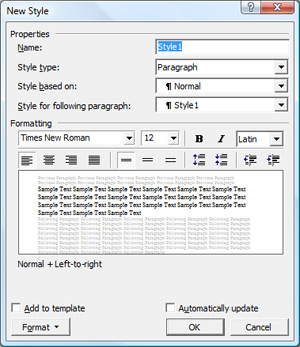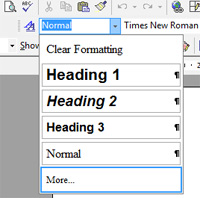3. Style Sheets
DEFINITION: A style sheet contains the instructions for the layout of a document, such as the font styles and sizes to be used, the style of headings and sub-headings, the size of the margins etc. Style sheets are used to maintain consistency throughout the document and across an organisation. |
Advantages
- Ensures that all company documents have a consistent house style and that they are instantly recognisable as belonging to that company
- Enables different people to work on different parts of a document then to put it together once everyone is finished. Everyone can be confident that all individual parts of the document will be formatted in the same style.
- A style sheet defines the parameters such as page size, font size/style, margin size etc. Staff know exactly what the document should look like before they start.
- The same style sheet can be used for different documents within the company, e.g. letters, memos, faxes, reports. Time is not wasted by having to keep setting up new documents.
- If the style is updated, only one change needs to be made to the style sheet and that change will automatically be applied across all documents that use the style sheet. For example, if a heading style is changed from Tahoma to Arial, then every document which has applied that heading style will change automatically.
Disadvantages
- All documents produced by the company look the same.
- Individual users within a company are not allowed to adapt the style sheet to suit their own needs or the needs of their target audience.
- The user might not want the style reflected across the whole document.
- The style sheet might use font types that are not installed on all company computers. Those users would see the font style revert to the default font style.
- Someone has to spend time developing the style sheet.
challenge see if you can find out one extra fact on this topic that we haven't already told you
Click on this link: Style Sheets
